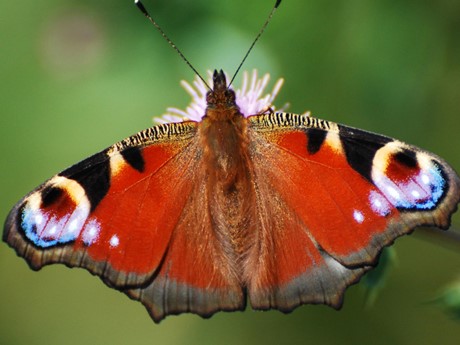Spring signs already on the way
Kate Lewthwaite, 02/02/2023
Here at Nature’s Calendar, we have already seen lots of “early” records reporting species events we would normally associate with spring. As well as flowering snowdrops and hazel as the usual suspects, commonly having early sightings, we have also had records of lesser celandines and elder budburst and leafing. Active peacock, brimstone and red admiral butterflies have already been seen outdoors too.
We also have some “late” autumn events still coming through, especially oak trees that reached full tint at the end of December but have yet to go fully bare.
Both of these are probably a result of the relatively mild spells we have experienced alongside periods of cold. December was colder than average, but November was warmer. January figures are still to be released.

Flowering hazel 27 November 2022. Photo: Andy Willis, Hampshire.

Elder budburst 29 December 2022. Photo: Andy Willis, Hampshire.

Oak full tint 27 December 2022. Photo: Rosemary Atkins, Norfolk.
What will be the impact of these mis-timed events?
I think of all the recent records, I am probably most concerned about the butterflies flying outdoors out of season. There will be scant food available, and they will be using up precious energy reserves unnecessarily and could easily be taken by predators. This could mean there will be fewer butterflies able to mate and lay eggs later in the season.
Is this the new norm?
Perhaps the most interesting thing about all these sightings, is that they are actually not unusual in recent times. For example, I took a closer look at our snowdrop records for the last 20 years. This season we had an individual bulb verified in flower on 1 December and the first flowering clump on 1 January. In fact, every single one of the last 20 years has resulted in some . Our earliest ever was in 2008 when we had a sighting on 10 November.
Is this good or bad? Well, as we always say with Nature’s Calendar, there will inevitably be winners and losers. Tree species like beech and birch have been shown experimentally to open fewer buds following artificial warming in a laboratory, reducing their vigour. Equally some trees and plants may benefit from the extended growing season.

First clump of flowering snowdrops, 1 January 2023. Photo: Andy Willis, Hampshire.
Building your own record of nature’s events
I also have a personal snowdrop record since 2007, following an established clump in my garden in Lincolnshire. My earliest ever record was 29 December in 2015. This year, my 4 January record is currently the third earliest reported for Nature’s Calendar for the UK, although of course more records are coming in all the time.
It was really not difficult to build up so many years of data and it is exciting to think that I now have 17 years of records of my own. Many research projects are only funded for 3 or 5 years and from my own back garden and with minimal effort, I am making a difference with what would now be considered a long-term record.
Consider “adopting“ a few species that you spot regularly to build up a long-term record of your own. Your findings could be fascinating.

Snowdrops 4 January 2023. Photo: Kate Lewthwaite, Lincolnshire.
Don’t forget to add your observations to Nature’s Calendar. Please keep looking and recording for Nature’s Calendar this spring. These records add to our historic database to build up a picture of how this year compares to previous years.

